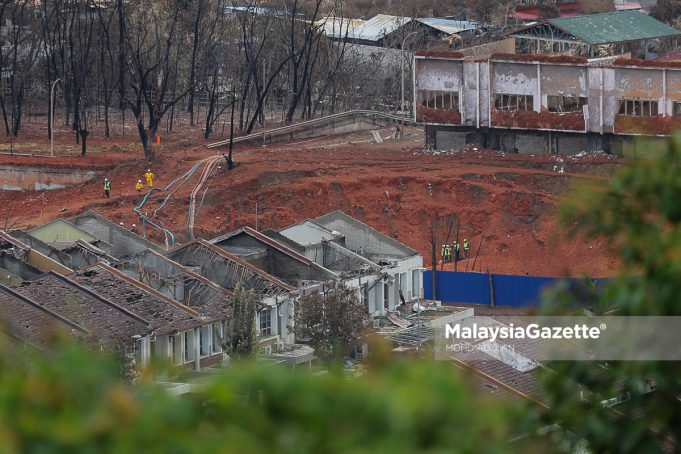THE recent gas pipeline explosion in Putra Heights has raised serious concerns about the role of urban planning in ensuring public safety. One of the issues is the placement of residential areas close to high-pressure gas pipelines, which suggests a possible lack of proper zoning regulations and insufficient risk assessments during the development approval process.
Additionally, the incident highlighted challenges in emergency response, as narrow and congested access roads may have delayed rescue efforts and hindered evacuation. These factors point to the need for better planning and coordination between developers and local authorities to prevent such incidents in the future, especially as urban areas continue to grow rapidly.
Negligence in city development and infrastructure planning can be seen through several critical issues surrounding the Putra Heights fire incident. Firstly, there is concern that the developer and contractor may have encroached into restricted or high-risk areas, violating land-use regulations and increasing the area’s vulnerability to disasters.
Secondly, the possibility of poor planning approval raises questions about whether proper procedures were followed, as there may have been no official clearance from the local council for construction in a potentially hazardous zone. Lastly, the rapid and uncontrolled development in the area, without thorough environmental or risk assessments, likely led to unsafe building practices and obstructed access routes, further complicating emergency
response efforts.
In light of these development concerns, investigations into the legal aspects of the Putra Heights project have also emerged. The Subang Jaya City Council confirmed that the development project had obtained necessary approvals in 2022. Authorities are now assessing compliance with safety regulations and potential lapses in construction activities.
Initial reports suggest that earthworks were conducted 30 meters from the explosion site, raising concerns about potential disruption to the gas pipeline. While no conclusive evidence has surfaced indicating negligence on the part of local authorities, the investigation continues to examine whether all safety standards were properly enforced and if any unauthorized or hazardous activities contributed to the incident.
Beyond planning and legality, human behavior has come under scrutiny. Investigations have pointed to possible human negligence, such as open rubbish burning and the use of fireworks, as contributing factors.
These risky activities, reported by residents and supported by eyewitness accounts of loud explosions, could have ignited or worsened the blaze. Moreover, nearby construction sites were found lacking in safety compliance.
Workers may not have received adequate training, and safety protocols were reportedly not followed. These findings emphasize the urgent need for stricter enforcement of construction safety regulations and for regular patrols by municipal councils and DOSH to detect hazards like open burning and improper waste management.
While human and infrastructural factors are central to the investigation, environmental conditions may have played a role in exacerbating the disaster. Although the primary cause is believed to be a gas leak, the dry conditions and high temperatures common in Malaysia may have amplified the fire's spread.
This incident underscores the importance of incorporating climate considerations into fire risk assessments. As climate change leads to more extreme weather, infrastructure such as gas pipelines becomes more vulnerable. Integrating environmental variables into emergency planning is essential to strengthening community resilience in the face of compounded risks.
Finally, the aftermath of the fire saw an explosion of misinformation online. Social media and certain news portals spread unverified claims, leading to panic among residents. Alarming headlines and viral posts prompted unnecessary evacuations, creating chaos that hindered emergency response efforts.
Though the Fire and Rescue Department later confirmed the situation was under control, the damage caused by misinformation had already strained resources and eroded public trust. This incident highlights the critical role of responsible communication during crises. Misinformation can magnify the impacts of disasters, making it harder for authorities to respond effectively and keep communities safe.
By: Dr Muhammad Heikal Ismail
Department of Environment
Faculty of Forestry And Environment
Universiti Putra Malaysia

















